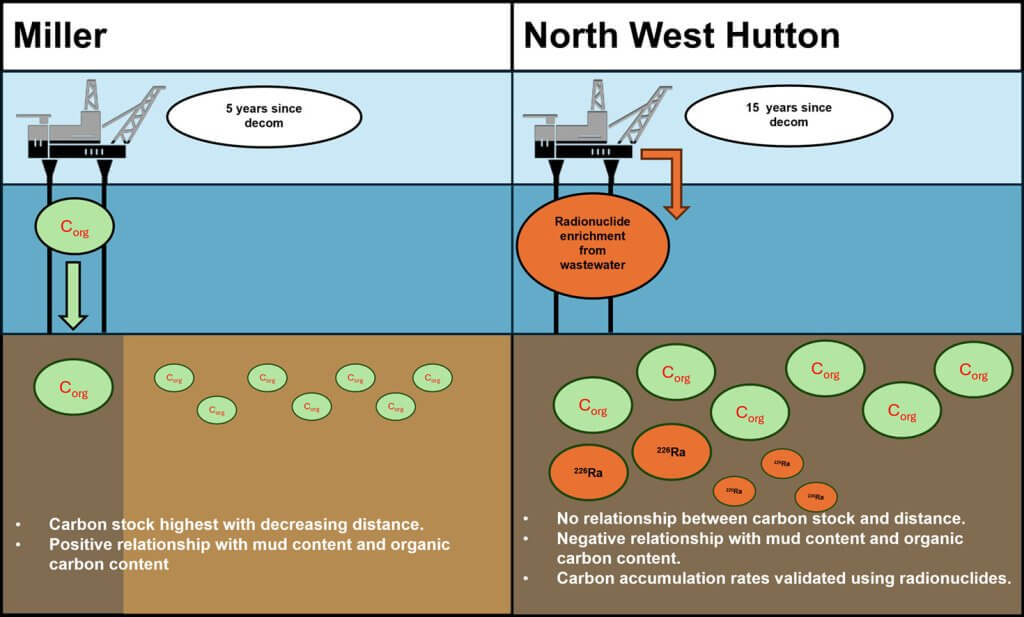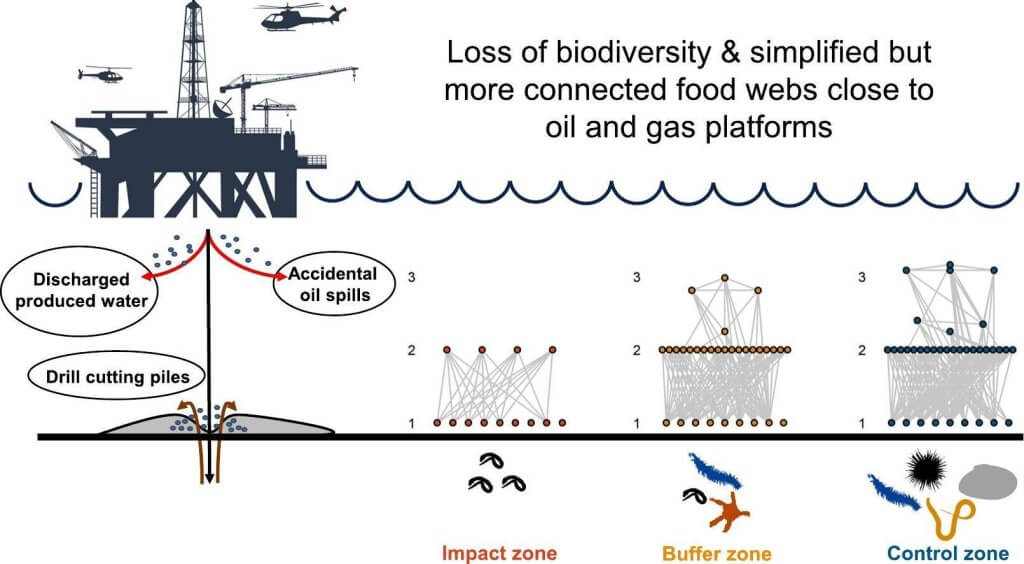The FuECoMMS project set out to understand how man-made marine structures—such as oil and gas platforms—affect life on the seafloor. As the offshore energy industry evolves and decommissioning accelerates, understanding the environmental effects and legacy of these installations has never been more critical.
By combining existing industry datasets with new fieldwork across the North Sea, FuECoMMS investigated how the presence, removal, or relocation of these structures influences biodiversity and ecosystem functioning in seabed habitats, everything from carbon cycling to contaminant breakdown.
The overall aim was to determine how the removal or placement of MMS in the sea will affect marine biodiversity and ecosystem function (including services and economic value) of associated benthic habitats.
To achieve this, the project explored the connections between seabed chemistry, microbes, and animals. It also investigated whether MMS act as sources of pollution and the potential for microbes to help clean this up, and used mapping and modelling to understand how impacts spread and how different structures in the North Sea are linked.
The FuECoMMS team combined existing environmental records, industry data, and new sediment samples taken from the seabed at distances of around 50 metres (as near to platforms as practically possible to capture near-field effects) to 3,000 metres (safely beyond the known footprint of platform influence) around decommissioned platforms in the North Sea. Surveys from the Scottish Government owned vessel RV Scotia used different tools to collect samples for biodiversity studies and for measurements of sediment chemistry and structure. Additional samples from decommissioned sites in the Southern North Sea were provided by industry project partners: Shell.
In the laboratory, the samples were analysed in a combination of ways to understand:

Figure 1: Woodward-Rowe et al. 2025 shows how carbon stocks and accumulation rates were measured around Miller and NWH.

Figure 2: Dal-Molin et al. 2025 shows how novel radioisotope workflows can be used to assess both sediment accumulation and potential radioecological risk.
The FuECoMMS research revealed that life on the seabed changes noticeably around oil and gas platforms when they are installed, active and decommissioned. Closer to the structures, within a few hundred metres, where traces of oil were higher in the sediment, the seabed communities became less varied — with fewer species overall, mostly smaller creatures, and not many top predators (see Figure 3 below). Yet rather than collapsing, these communities adapted. The food webs became tighter and more interconnected, showing a shift in how the ecosystem works rather than a loss of function.

Figure 3: Chen et al. 2024 shows simplified but more tightly connected networks near platforms under contamination.
These changes were strongest within up to several hundred metres of the platforms. Beyond that range, microbial and faunal communities gradually became more similar to unaffected sites, indicating that the ecological footprint of the structures is measurable but localised (see Lynam et al. 2025). This “zone of influence” highlights the importance of considering proximity effects when planning decommissioning or future seabed management.
Sampling showed that years, even a decade or more, after decommissioning, structures leave an imprint on the surrounding ecosystem. Microbial and macrofaunal diversity was markedly different within 50 metres of platforms, with elevated concentrations of heavy metals—such as copper, nickel, and zinc—also detected at this distance. Importantly, the project identified specific microbial genes and taxa that may serve as sensitive indicators of environmental change, offering a new way to monitor the long-term impacts of decommissioning (see Fortune et al. 2024).
Understanding how seabed ecosystems respond to oil and gas infrastructure depends on having good baseline information—data collected before platforms are installed or removed. Without it, it is difficult to judge the full scale of change over time. Clear baselines also provide managers with a reference point for assessing recovery, setting decommissioning targets, and designing future monitoring programmes that minimise long-term ecological risks.
Equally, gaining access to some active infrastructure sites remains a challenge because of safety and operational restrictions. These issues underline the importance of working closely with industry, ongoing monitoring, and building robust baseline datasets to overcome logistical barriers. Encouragingly, new approaches—such as DNA sequencing of drill cuttings and additional sediment analyses—are beginning to help bridge some of these gaps. Emerging tools like environmental eDNA also allow samples to be collected without needing to work in close proximity to platforms, widening the scope of ecological monitoring.